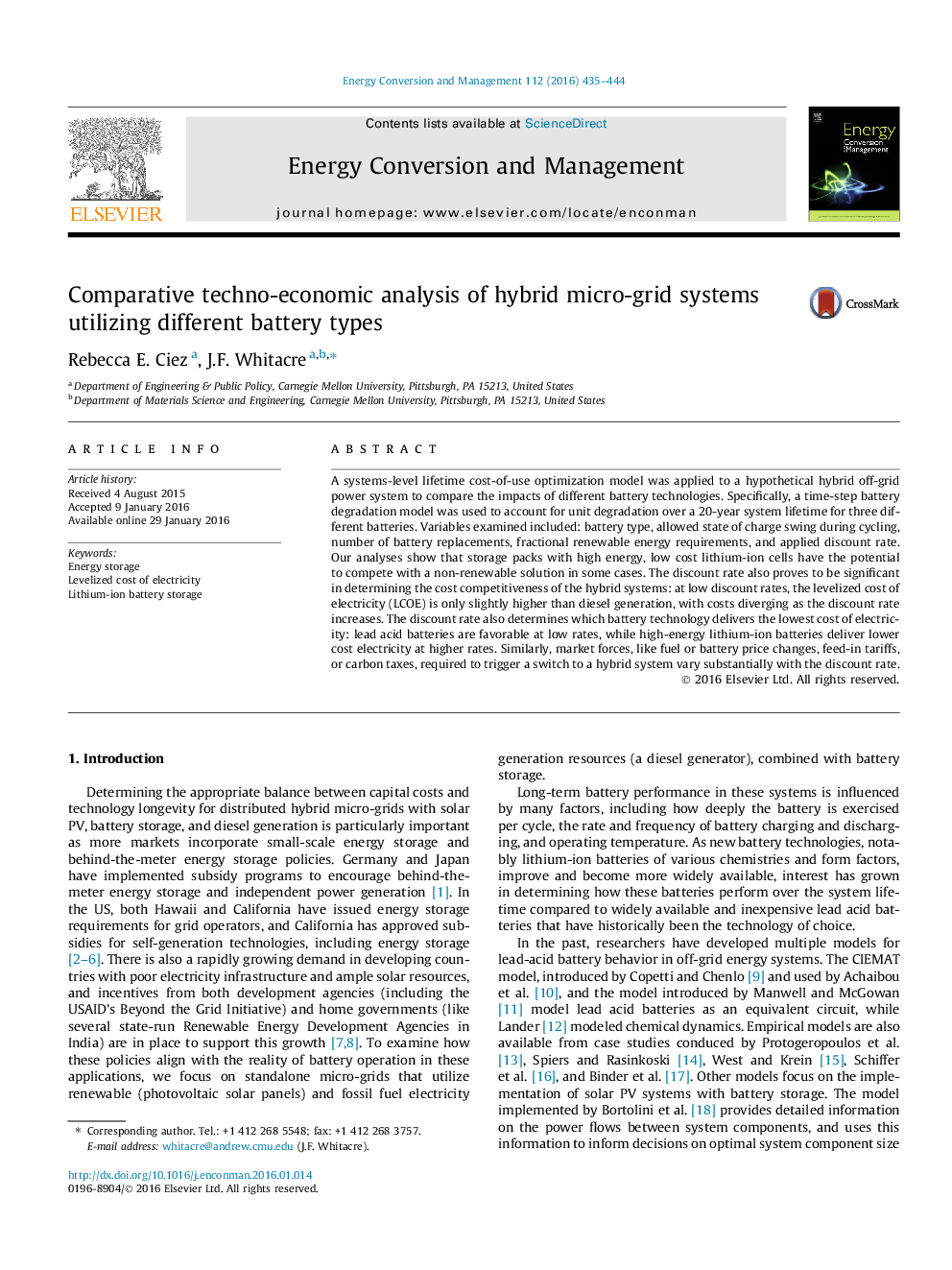| Article ID | Journal | Published Year | Pages | File Type |
|---|---|---|---|---|
| 763524 | Energy Conversion and Management | 2016 | 10 Pages |
•Comparative analysis of 3 battery chemistries in microgrid storage application.•At discount rates >1%, diesel-only generation still cheapest electricity option.•Optimal battery chemistry highly dependent on discount rate.•For discount rates <4%, lead acid is the cheapest storage options.•High energy density li-ion the cheapest storage option for discount rates >4%.
A systems-level lifetime cost-of-use optimization model was applied to a hypothetical hybrid off-grid power system to compare the impacts of different battery technologies. Specifically, a time-step battery degradation model was used to account for unit degradation over a 20-year system lifetime for three different batteries. Variables examined included: battery type, allowed state of charge swing during cycling, number of battery replacements, fractional renewable energy requirements, and applied discount rate. Our analyses show that storage packs with high energy, low cost lithium-ion cells have the potential to compete with a non-renewable solution in some cases. The discount rate also proves to be significant in determining the cost competitiveness of the hybrid systems: at low discount rates, the levelized cost of electricity (LCOE) is only slightly higher than diesel generation, with costs diverging as the discount rate increases. The discount rate also determines which battery technology delivers the lowest cost of electricity: lead acid batteries are favorable at low rates, while high-energy lithium-ion batteries deliver lower cost electricity at higher rates. Similarly, market forces, like fuel or battery price changes, feed-in tariffs, or carbon taxes, required to trigger a switch to a hybrid system vary substantially with the discount rate.
Graphical abstractFigure optionsDownload full-size imageDownload as PowerPoint slide
